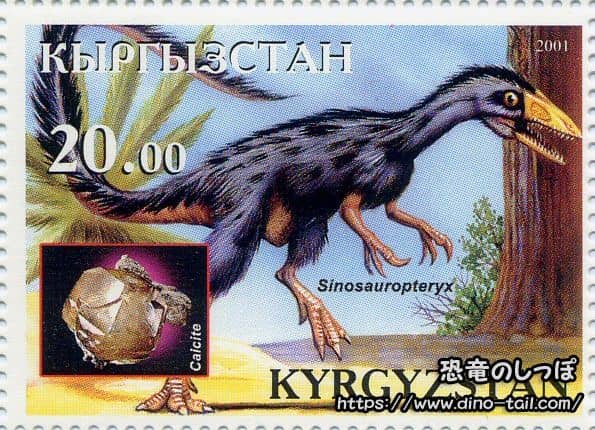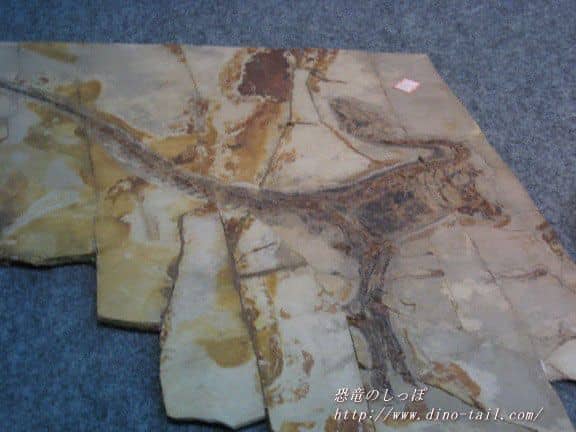About Sinosauropteryx
| Scientific Name (Genus) | Sinosauropteryx |
| Meaning of Name |
Chinese dragon bird (a feathered, lizard-like bird from China)
Sino (Chinese) [country name] - sauros (lizard) [Greek] - pteryx (wing, feather) [Greek] |
| Classification | Saurischia, Theropoda (Compsognathidae) |
| Total Length | Approx. 1m |
| Diet | Carnivorous |
| Period | Early Cretaceous |
| Species | Sinosauropteryx prima |
| Year of Paper Publication | 1996 |
| Description Paper |
On discovery of the earliest bird fossil in China (Sinosauropteryx gen. nov.) and the origin of birds.
Chinese Geology. Beijing: Chinese Geological Museum. 10. by Ji Qiang, Ji, S. 1996. |
Features
Sinosauropteryx was announced in 1996 as the 'first dinosaur discovered with feather impressions preserved.'
This fossil, discovered in Liaoning Province, China, is famous as 'one of the strong pieces of evidence that a group of dinosaurs evolved into birds.'
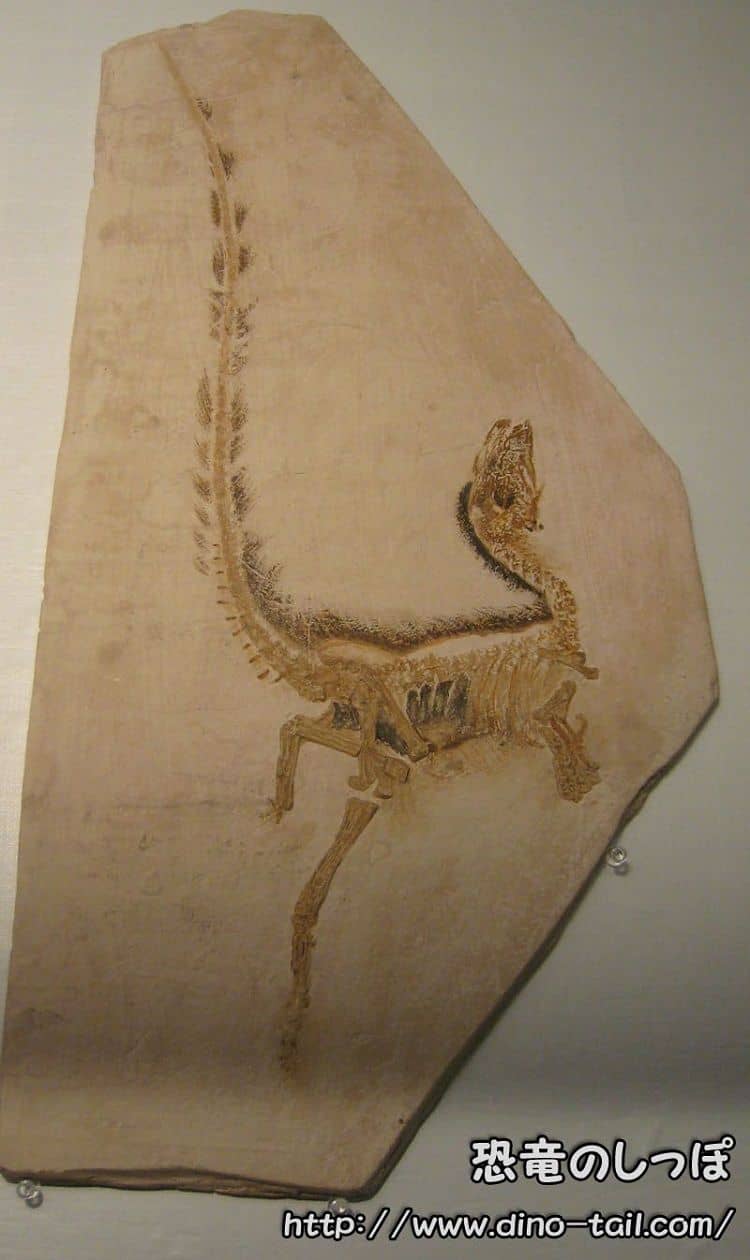
Clear feather impressions are preserved.
The feathers of Sinosauropteryx were not 'for flying.'
It is thought that the initial purpose of having feathers was 'to retain body heat.'
Its long tail, used for balance, is also a characteristic feature.
It had small, sharp teeth and is thought to have preyed on small animals and insects.
Its diet has been more specifically proven by 'last supper' fossils with preserved stomach contents. The lower jaw of a small mammal ( Zhangheotherium ) was found in the stomach of one specimen, and a swallowed lizard was found in another.
Furthermore, in one female specimen, two eggs (unlaid) were preserved inside the body. This is very valuable evidence regarding reproduction, indicating that Sinosauropteryx, like crocodiles, ovulated from two ovaries at the same time, rather than one at a time like birds.
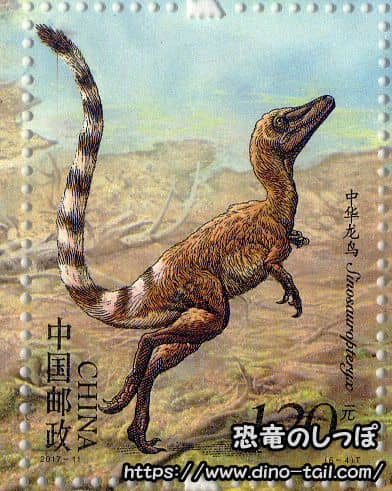
The Feather Impression Controversy
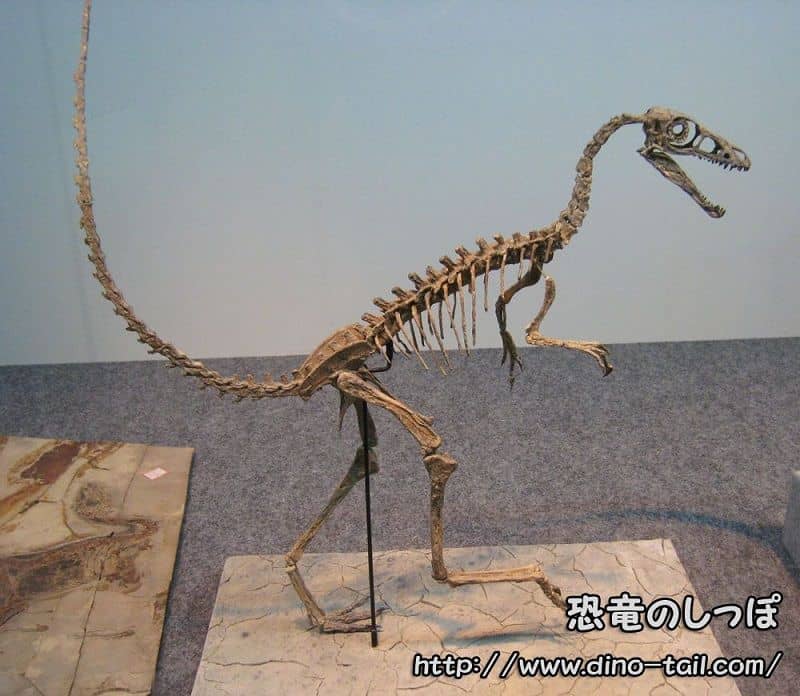
Although Sinosauropteryx was announced in 1996 as a 'dinosaur fossil with feather impressions,' a counter-argument was presented in a 2007 paper by a research team from South Africa.
They published their view that 'examination of the specimen shows that the fibrous impressions that look like feathers are not feathers but traces of collagen fibers.'
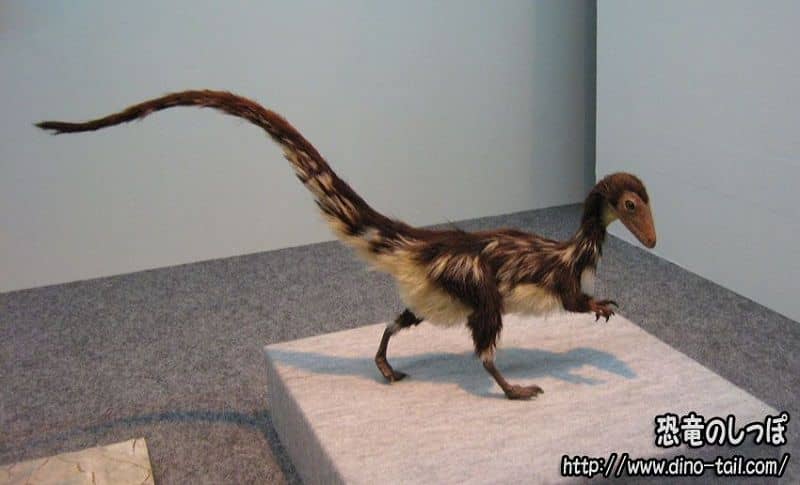
In the latest research, the theory that they are 'feather impressions' has become dominant, as the impressions thought to be feathers are packed with intracellular organelles called melanosomes, which are found in the feathers of modern birds but not in collagen fibers.
Also, since the discovery of Sinosauropteryx, the existence of 'feathered dinosaurs' has become widely known, and the theory that 'dinosaurs are the ancestors of birds' has established a strong position, also due to similarities such as air sacs for efficient oxygen intake.
Feather Color Identification: Bandit Mask and Camouflage
Sinosauropteryx is also famous as the first dinosaur whose body color has been scientifically reconstructed. A 2010 study suggested that its tail had a striped pattern of reddish-brown and white (or pale orange), based on the analysis of pigment cells (melanosomes) preserved in the feather impressions.
Furthermore, in 2017, a research team from the University of Bristol took this research a step further and revealed a surprisingly detailed body color pattern.
- Countershading: It had a color pattern called 'countershading,' with a dark back that gradually lightened towards the belly. This is a camouflage seen in many modern animals, which cancels out the shadow cast by the body, making it less three-dimensional and harder to spot by predators.
- Bandit mask pattern: It was found to have a 'bandit mask' pattern of dark feathers around its eyes, similar to raccoons and tanukis. This is also thought to have had the effect of reducing glare and blurring the outline of the body.
These discoveries scientifically indicate that Sinosauropteryx lived in an environment with a mixture of open spaces and shadows, such as a forest, while hiding from predators.
Sinosauropteryx Stamp & Fossil Gallery
